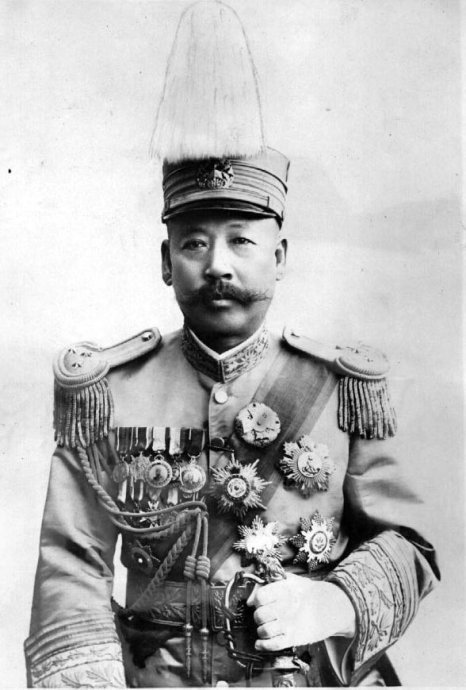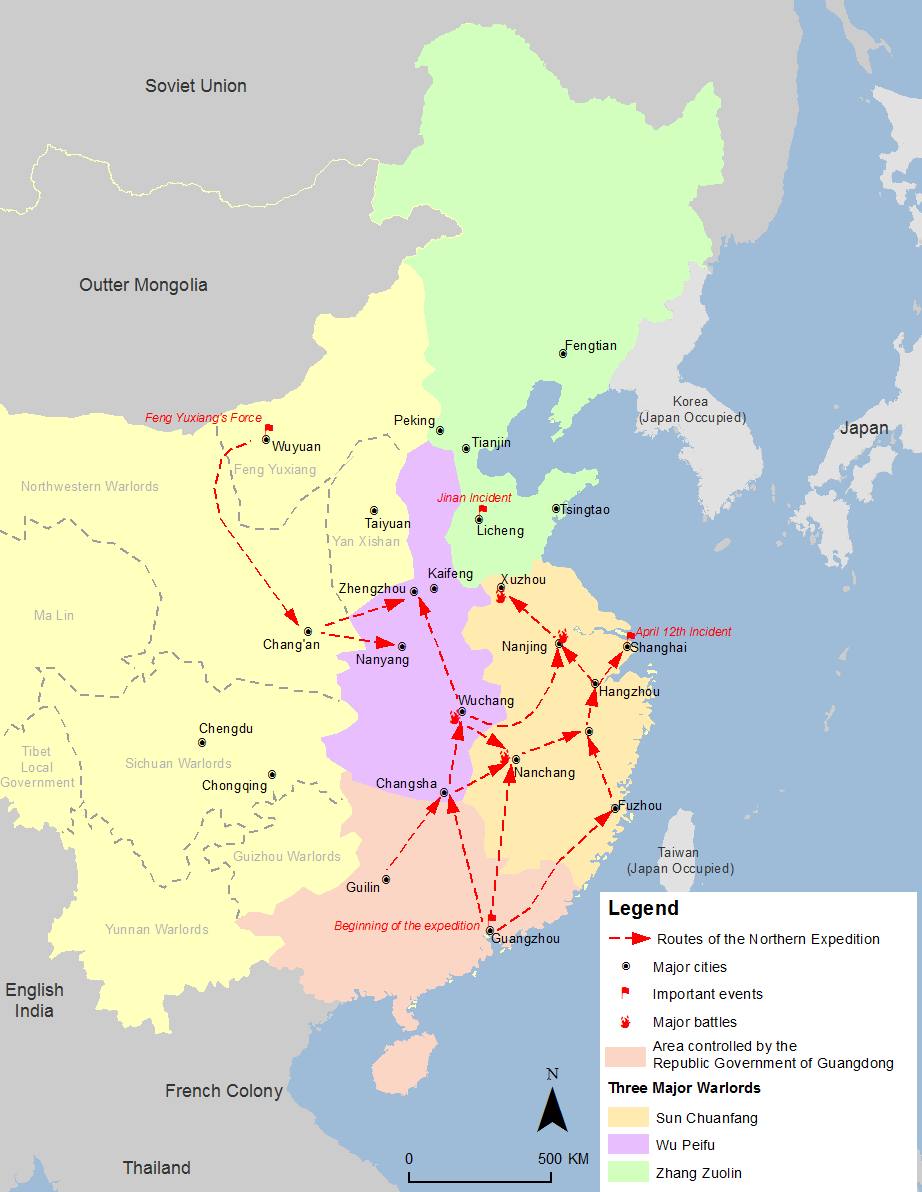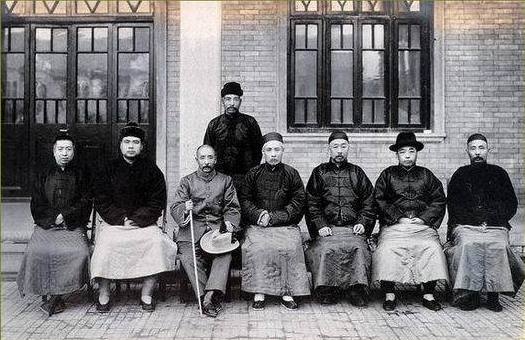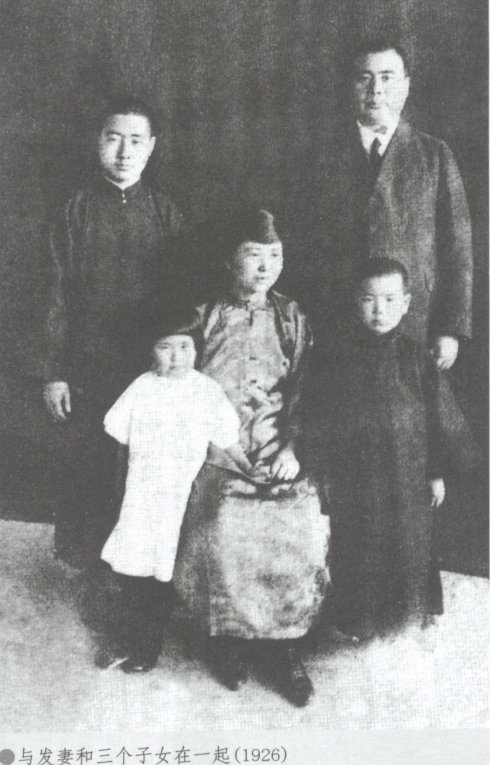|
Zhili Clique
The Zhili clique () was one of several mutually hostile cliques or factions that split from the Beiyang clique during the Republic of China's Warlord Era. This fragmentation followed the death of Yuan Shikai, who was the only person capable of keeping the Beiyang Army together. It was named for the general region of the clique's base of power, Zhili Province, now Hebei, and during its height also controlled Jiangsu, Jiangxi, and Hubei. Unlike other cliques, this one was formed by officers who felt discriminated against by Premier Duan Qirui in matters of appointment and promotions. They rallied around President Feng Guozhang who had to share power with Duan's dominant Anhui clique in the Beiyang government. Lacking strong bonds, they were more willing to abandon or betray one another. They advocated a softer line during the Constitutional Protection War. After Feng's natural death, leadership passed to Cao Kun. Cao was victorious in the Zhili–Anhui War (1920) though the cred ... [...More Info...] [...Related Items...] OR: [Wikipedia] [Google] [Baidu] |
Republic Of China (1912–1949)
The Republic of China (ROC), between 1912 and 1949, was a sovereign state recognised as the official designation of China when it was based on Mainland China, prior to the relocation of its central government to Taiwan as a result of the Chinese Civil War. At a population of 541 million in 1949, it was the world's most populous country. Covering , it consisted of 35 provinces, 1 special administrative region, 2 regions, 12 special municipalities, 14 leagues, and 4 special banners. The People's Republic of China (PRC), which rules mainland China today, considers ROC as a country that ceased to exist since 1949; thus, the history of ROC before 1949 is often referred to as Republican Era () of China. The ROC, now based in Taiwan, today considers itself a continuation of the country, thus calling the period of its mainland governance as the Mainland Period () of the Republic of China in Taiwan. The Republic was declared on 1 January 1912 after the Xinhai Revolution, wh ... [...More Info...] [...Related Items...] OR: [Wikipedia] [Google] [Baidu] |
Duan Qirui
Duan Qirui (; ) (March 6, 1865 – November 2, 1936) was a Chinese warlord and politician, a commander of the Beiyang Army and the acting Chief Executive of the Republic of China (in Beijing) from 1924 to 1926. He was also the Premier of the Republic of China on four occasions between 1913 and 1918. He was arguably the most powerful man in China from 1916 to 1920. Early life Born in Hefei as ''Duan Qirui'' (), his courtesy name was ''Zhiquan'' (). His grandfather was Duan Pei ( zh, 段佩), an officer in Li Hongzhang's privately raised Huai Army (Huai Jun, zh, 淮軍). His father died early and he was raised by his maternal grandmother. Early career In 1885 Duan Qirui entered Tianjin Military Academy (), specializing in artillery, and graduated at the top of his class. Spence 285 After graduation, he was sent to Lüshun to oversee the construction of artillery fortifications and came to the attention of Li Hongzhang, who sent him to study military science in Germany for ... [...More Info...] [...Related Items...] OR: [Wikipedia] [Google] [Baidu] |
List Of Warlords And Military Cliques In The Warlord Era
The Warlord Era was a historical period of the Republic of China that began from 1916 and lasted until the mid-1930s, during which the country was divided and ruled by various military cliques following the death of Yuan Shikai in 1916. Communist revolution broke out in the later part of the warlord period, beginning the Chinese Civil War. The era nominally ended in 1928 at the conclusion of the Northern Expedition with the Northeast Flag Replacement, beginning the " Nanjing decade". However, "residual warlords" continued to exist into the 1930s under ''de jure'' Kuomintang rule, and remained until the end of the Communist victory in 1949. The warlords and military cliques of the Warlord Era are generally divided into the Northern factions and the Southern factions. The following is a list of cliques within each faction, and the dominant warlords within that clique. Northern factions The cliques in the North emerged from the fragmentation of the Beiyang Government/Army. Mo ... [...More Info...] [...Related Items...] OR: [Wikipedia] [Google] [Baidu] |
Communications Clique
The Communications Clique () was a powerful interest group of politicians, bureaucrats, technocrats, businessmen, engineers, and labour unionists in China's Beiyang government (1912-1928). It is also known as the Cantonese Clique because many of its leaders hailed from Guangdong. They were named after the Ministry of Posts and Communications which was responsible for railways, postal delivery, shipping, and telephones as well as the Bank of Communications. This ministry earned five times more revenue for the government than all the other ministries combined. The clique was founded by Tang Shaoyi but it was led by Liang Shiyi throughout most of its existence. They were instrumental in the rise of Yuan Shikai in the late Qing and early republican period. Because they were Yuan's biggest supporters of his attempt to restore the monarchy, their leaders were forced to flee the country when President Li Yuanhong ordered their arrest. In their absence, the New Communications Clique (191 ... [...More Info...] [...Related Items...] OR: [Wikipedia] [Google] [Baidu] |
Communist Party Of China
The Chinese Communist Party (CCP), officially the Communist Party of China (CPC), is the founding and sole ruling party of the People's Republic of China (PRC). Under the leadership of Mao Zedong, the CCP emerged victorious in the Chinese Civil War against the Kuomintang, and, in 1949, Mao proclaimed the establishment of the People's Republic of China. Since then, the CCP has governed China with eight smaller parties within its United Front and has sole control over the People's Liberation Army (PLA). Each successive leader of the CCP has added their own theories to the party's constitution, which outlines the ideological beliefs of the party, collectively referred to as socialism with Chinese characteristics. As of 2022, the CCP has more than 96 million members, making it the second largest political party by party membership in the world after India's Bharatiya Janata Party. The Chinese public generally refers to the CCP as simply "the Party". In 1921, Chen Duxiu an ... [...More Info...] [...Related Items...] OR: [Wikipedia] [Google] [Baidu] |
Kuomintang
The Kuomintang (KMT), also referred to as the Guomindang (GMD), the Nationalist Party of China (NPC) or the Chinese Nationalist Party (CNP), is a major political party in the Republic of China, initially on the Chinese mainland and in Taiwan after 1949. It was the sole party in China during the Republican Era from 1928 to 1949, when most of the Chinese mainland was under its control. The party retreated from the mainland to Taiwan on 7 December 1949, following its defeat in the Chinese Civil War. Chiang Kai-shek declared martial law and retained its authoritarian rule over Taiwan under the '' Dang Guo'' system until democratic reforms were enacted in the 1980s and full democratization in the 1990s. In Taiwanese politics, the KMT is the dominant party in the Pan-Blue Coalition and primarily competes with the rival Democratic Progressive Party (DPP). It is currently the largest opposition party in the Legislative Yuan. The current chairman is Eric Chu. The party o ... [...More Info...] [...Related Items...] OR: [Wikipedia] [Google] [Baidu] |
Sun Chuanfang
Sun Chuanfang () (April 17, 1885 – November 13, 1935) a.k.a. the "Nanking Warlord" or leader of the "League of Five Provinces" was a Zhili clique warlord and protégé of the "Jade Marshal" Wu Peifu (1874–1939). Biography Sun Chuanfang was born in Licheng, Shandong Province. Wang Yingkai, a rising officer in the Beiyang Army and protégé of Yuan Shikai, the commander of the Beiyang Army, married Sun's sister, and Sun took advantage of his brother-in-law's position and joined a training camp in 1902. Wang later recommended Sun to Tianjin Military Academy because of the latter's outstanding capabilities; in 1904 he also sent Sun abroad to Japan for more education at the Tokyo Shimbu Gakko, a military preparatory school. Sun eventually graduated from the sixth class of the Imperial Japanese Army Academy and returned to China in 1908. Upon his return from Japan, Wang and his political ally, Tie Liang, happened to be the ones presiding over the examination aimed at testing ... [...More Info...] [...Related Items...] OR: [Wikipedia] [Google] [Baidu] |
Beijing Coup
The Beijing Coup () refers to the October 1924 ''coup d'état'' by Feng Yuxiang against Chinese President Cao Kun, leader of the Zhili warlord faction. Feng called it the Capital Revolution (). The coup occurred at a crucial moment in the Second Zhili–Fengtian War and allowed the pro-Japanese Fengtian clique to defeat the previously dominant Zhili clique. Followed by a brief period of liberalization under Huang Fu, on November 23 this government was replaced by a conservative, pro-Japanese government led by Duan Qirui. The coup alienated many liberal Chinese from the Beijing government. Events In 1923 Cao Kun became president by bribing the National Assembly. His Zhili clique, whose military was commanded by Wu Peifu, had already established itself as the dominant military force in China through a succession of resounding military victories. However, Cao was not satisfied with being just a strongman and wished the prestige of being officially titled head of state. After ousting ... [...More Info...] [...Related Items...] OR: [Wikipedia] [Google] [Baidu] |
Feng Yuxiang
Feng Yuxiang (; ; 6 November 1882 – 1 September 1948), courtesy name Huanzhang (焕章), was a warlord and a leader of the Republic of China from Chaohu, Anhui. He served as Vice Premier of the Republic of China from 1928 to 1930. He was also known as the "Christian General" for his zeal to convert his troops and the "Traitorous General" for his penchant to break with the establishment. In 1911 he was an officer in the ranks of Yuan Shikai's Beiyang Army but joined forces with revolutionaries against the Qing dynasty. He rose to high rank within Wu Peifu's Zhili warlord faction but launched the Beijing Coup in 1924 that knocked Zhili out of power and brought Sun Yat-sen to Beijing. He joined the Nationalist Party (KMT), supported the Northern Expedition and became blood brothers with Chiang Kai-shek, but resisted Chiang's consolidation of power in the Central Plains War and broke with him again in resisting Japanese incursions in 1933. He spent his later years suppor ... [...More Info...] [...Related Items...] OR: [Wikipedia] [Google] [Baidu] |
President Of The Republic Of China
The president of the Republic of China, now often referred to as the president of Taiwan, is the head of state of the Republic of China (ROC), as well as the commander-in-chief of the Republic of China Armed Forces. The position once had authority of ruling over Mainland China, but its remaining jurisdictions has been limited to Taiwan, Penghu, Kinmen, Matsu and other smaller islands since the conclusion of Second Chinese Civil War. Originally elected by the National Assembly, the presidency was intended to be a ceremonial office with no real executive power as the ROC was originally envisioned as a parliamentary republic. Since the 1996 presidential election, the president is directly elected by plurality voting to a four-year term, with incumbents limited to serving two terms. The incumbent, Tsai Ing-wen, succeeded Ma Ying-jeou on May 20, 2016, to become the first female president in the history of Taiwan. Qualifications * The ''Presidential and Vice Preside ... [...More Info...] [...Related Items...] OR: [Wikipedia] [Google] [Baidu] |
Fengtian Clique
The Fengtian clique () was one of several opposing military factions that constituted the early Republic of China during its Warlord Era. It was named after Fengtian Province (now Liaoning), and operated from a territorial base comprising the three northeastern provinces that made up Manchuria.Fengtien Clique '''', 3rd Edition (1970-1979). Warlord , known as the "Old Marshal," led the clique with support from . Fol ... [...More Info...] [...Related Items...] OR: [Wikipedia] [Google] [Baidu] |
Wu Peifu
Wu Peifu or Wu P'ei-fu (; April 22, 1874 – December 4, 1939) was a major figure in the struggles between the warlords who dominated Republican China from 1916 to 1927. Early career Born in Shandong Province in eastern China, Wu initially received a traditional Chinese education. He later joined the Baoding Military Academy () in Beijing and embarked on a career as a professional soldier. His talents as an officer were recognized by his superiors, and he rose quickly in the ranks. Wu joined the "New Army" () (renamed the Beiyang Army in 1902) created by modernizing Qing dynasty Gen. Yuan Shikai. Following the fall of the Qing in 1911, and after Yuan's rise to President of the Republic of China and his subsequent disastrous attempt to proclaim himself emperor, political power in China quickly devolved into the hands of various regional military authorities, inaugurating the era of warlordism. In 1915 Wu became commander of the 6th Brigade. Zhili Clique After Yuan's ... [...More Info...] [...Related Items...] OR: [Wikipedia] [Google] [Baidu] |






